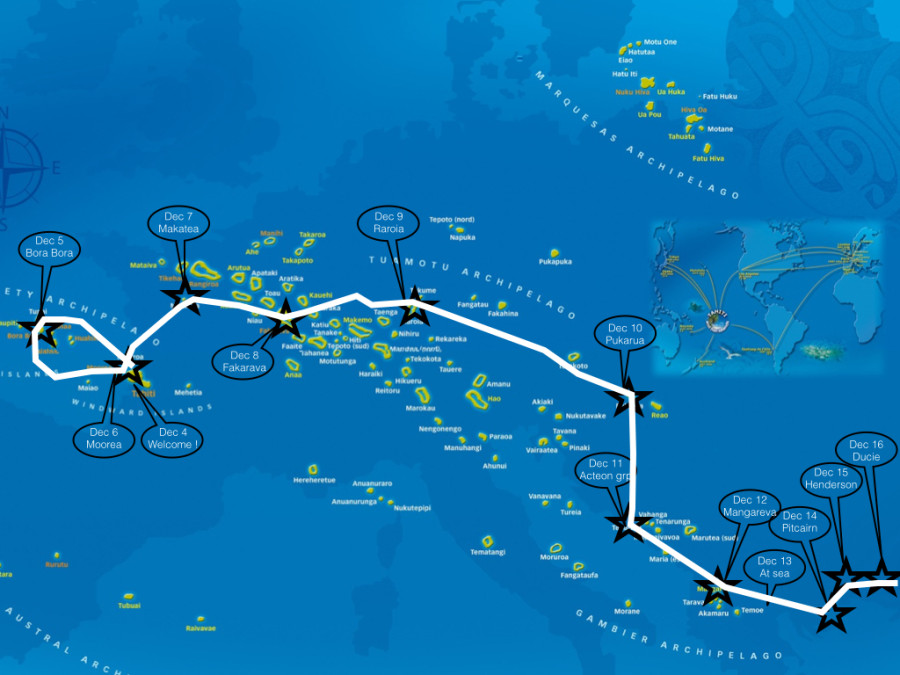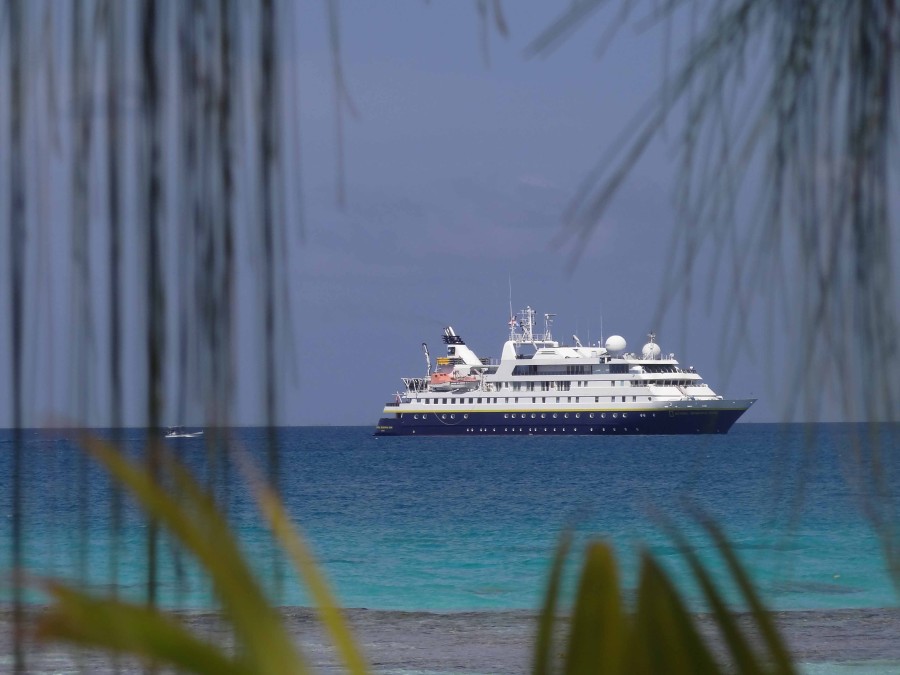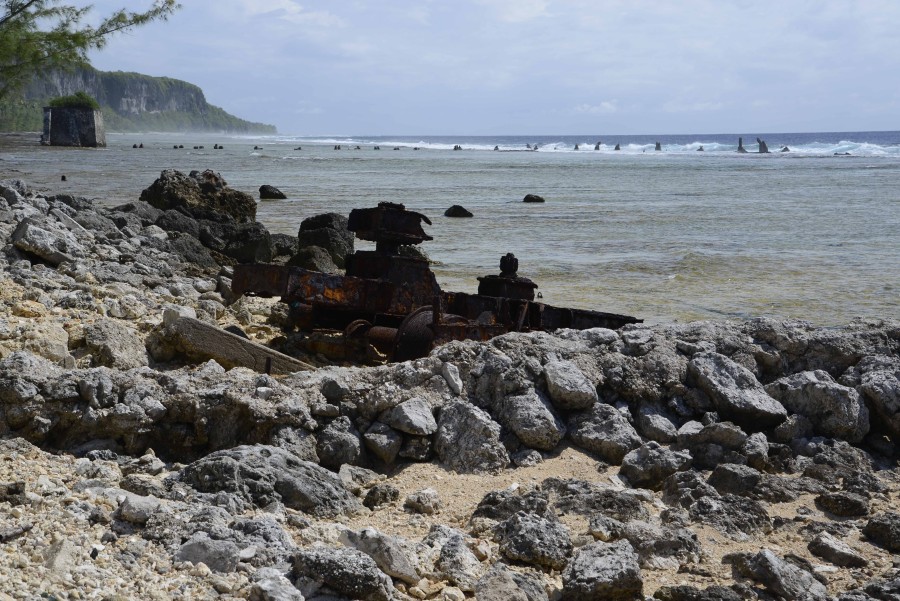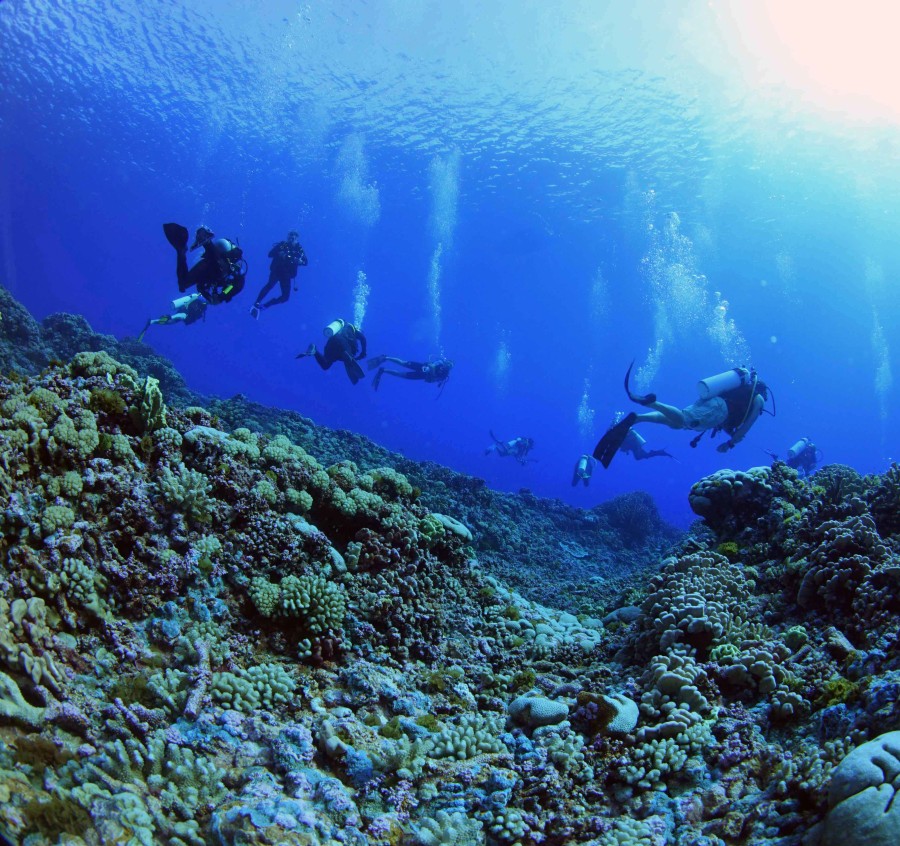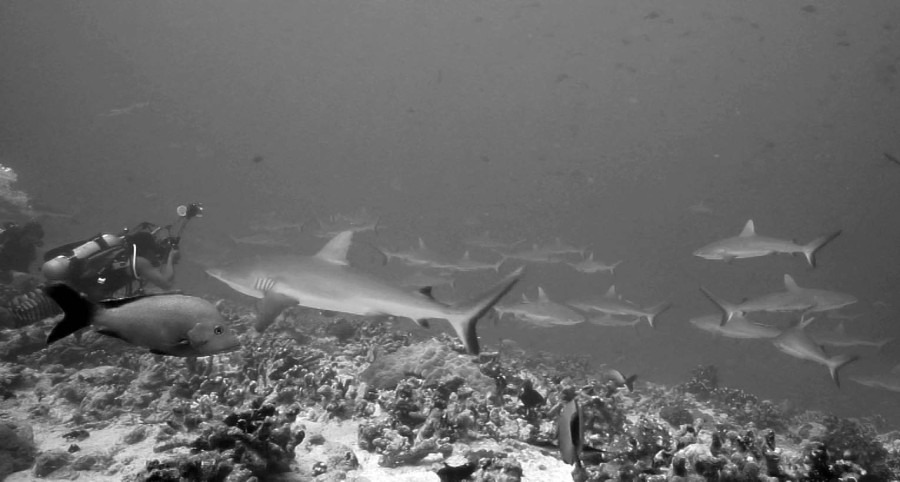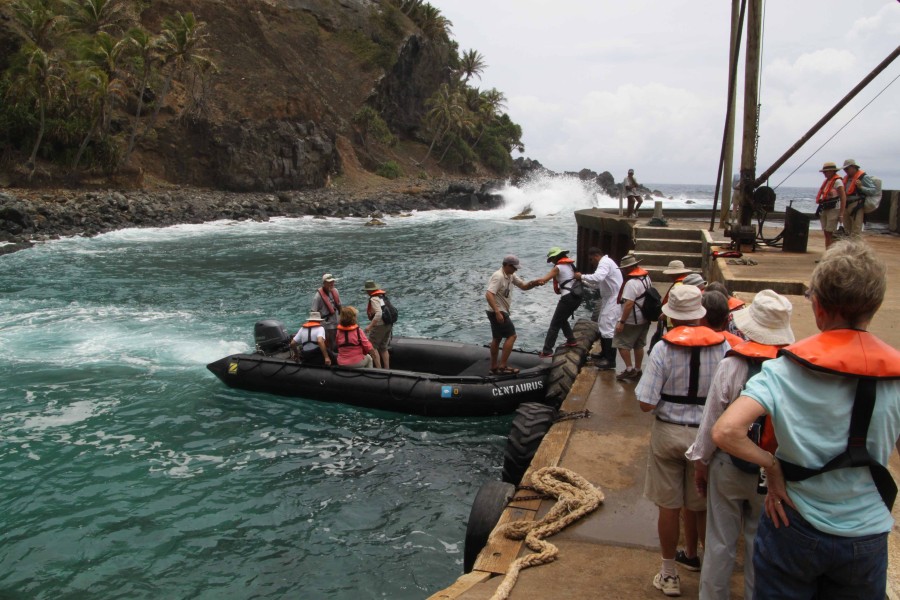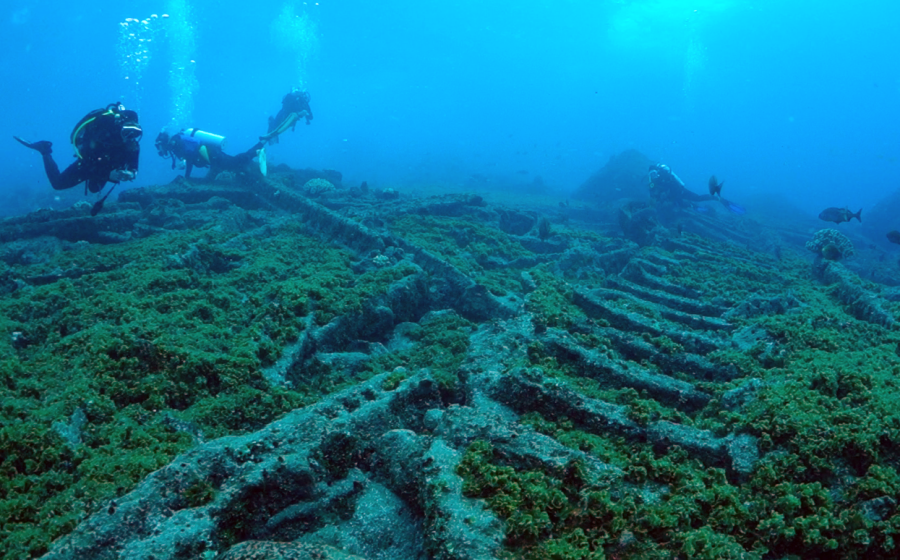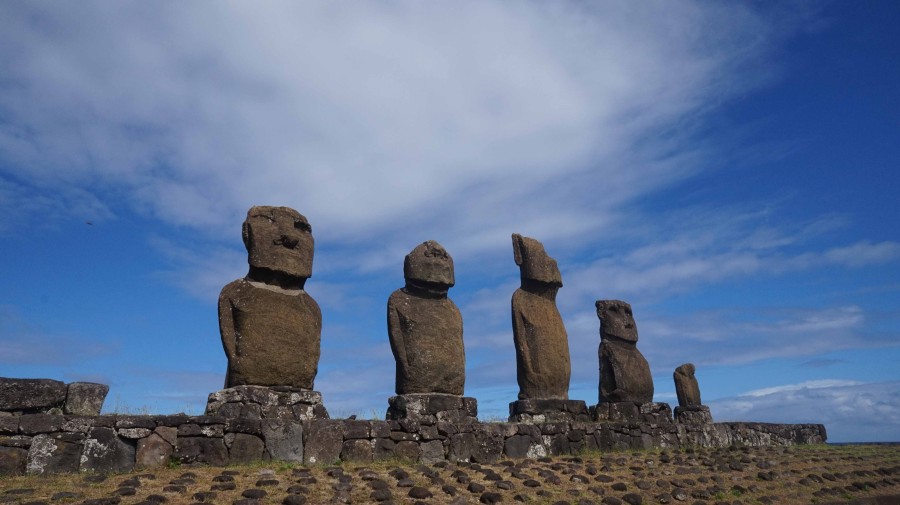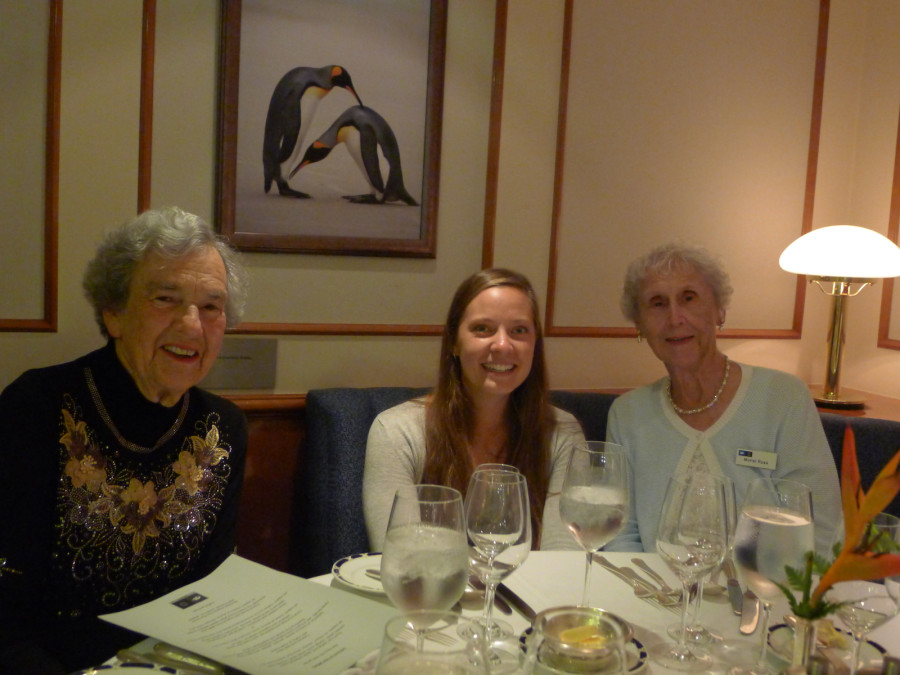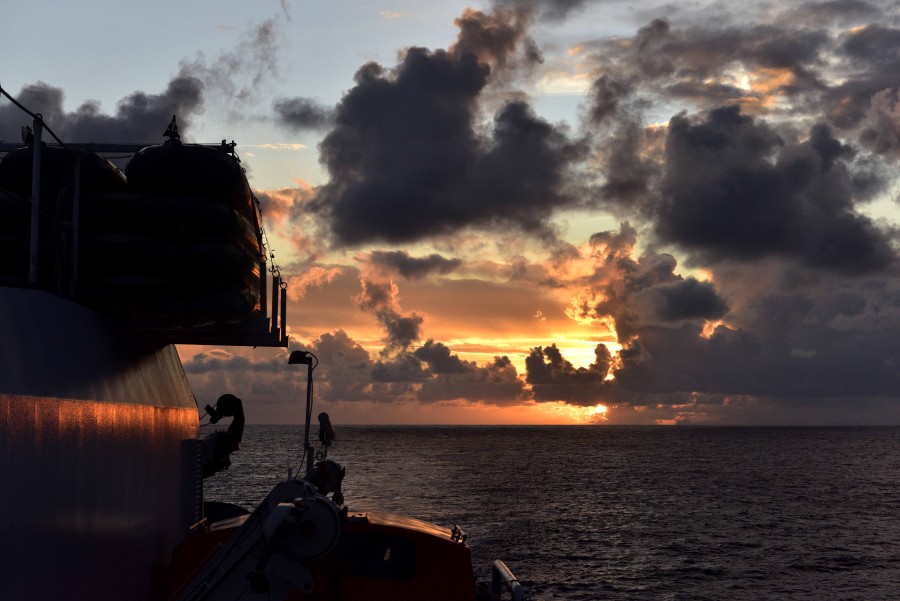From the fresh spring days of New Zealand, back to the tropics. I set out to cross the south pacific from Tahiti to Easter Island with Lindblad expeditions. The lovely Erin McFadden greeted me on arrival to Tahiti, French Polynesia. As a past European scholar Erin now spends her time exploring the world’s oceans onboard Lindblad’s expedition vessels as a divemaster and undersea specialist.
Onboard National Geographic Orion we were able to reach very remote places on our journey across the south pacific. Departing from Tahiti the first two dive days included reefs surrounding Bora Bora and Moorea. While the mountainous terrain provided a stunning outlook, underwater the impact of a cyclone from several years before was still visible, with coral rubble littering the sites. However, the variety of fish life present and recovering corals made for nice diving.
Moving East we arrived on Makatea, a raised coral island known for large phosphate deposits which were mined and extracted between 1917 and 1964. Today few relics of the phosphate mining remain, and the island can instead be admired for its rich flora, endemic bird species and amazing coral reefs, which drop off steeply around the island. It was great to see the massive contrast to previous dives, and to explore the untouched reefs where sunken debris from the phosphate mines had been completely taken over by the natural surrounds.
Further east again we arrived at the underwater highlight of the expedition. Fakarava Atoll of Tuamotu Islands, French Polynesia. Described by one of the dive masters on board as up there with Millennium Island from the line Islands, this site was a prime example of a healthy marine ecosystem – sadly which has become a rarity to see today. Entering the water we were unprepared for just how amazing this dive would be, it was such a privilege to have dived here!
Onto Pukarua of the Tuamotu islands and Mangareva of the Gambier Islands. Pukarua is a coral atoll 17mk long with around 100 inhabitants. Unlike the previous site, no big fish were seen, but beautiful hard corals enveloped the atoll. A completely different site awaited us at Mangareva, the largest island of Gambier islands. Surrounded by a 24km lagoon, Mangarevas’ coral reefs were sheltered from adverse weather conditions allowing for delicate species to thrive.
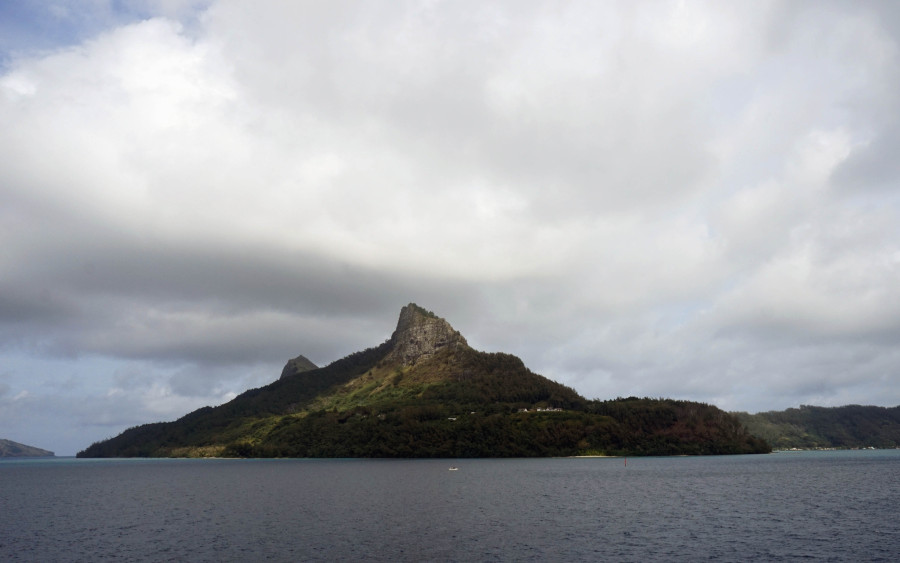
Famous for Mutiny of the Bounty, Pitcairn Island was the next and final diving destination for this expedition. First inhabited in 1790 by nine of the mutineers and their Tahitian companions and reaching a peak population of 233 residents in 1937, today less than fifty people reside on the island. Accompanied by two of the Pitcairn locals we descended down onto the first site, a rocky reef just off Bounty Bay. One of the first species I saw was the yellowtail kingfish highlighting the convergence of tropical and temperate species – a clear difference to previous dives in French Polynesia. Our last dive of the trip was again something completely different as we descended onto one of the two wrecks surrounding Pitcairn Island. The Liverpool ship, Cornwallis, was homebound in 1875 when it stopped by Pitcairn and the crew went ashore. Meanwhile the Cornwallis drifted forward towards the rocks leading to its destruction, and leaving behind a shallow shipwreck many years later. Due to the shallow depth, surge swept us back and forward over the remains, with some of the wooden decking appearing very much intact and several fish species at home beneath the planking.
Our final stop and port of disembarkation, Rapa Nui (commonly known as Easter Island), provided a great end to the trip, highlighting another unique culture and showing just how far we travelled. No other vessels or expedition teams undertake such extensive trips across these vast remote areas. Lindblad expeditions provide so much information on board, including daily presentations on everything being explored underwater and on land, with local experts sharing their own life experiences and knowledge. There is no better way to capture the natural environment and cultural influence spread across the south pacific. Furthermore, divers onboard are able to compare many different sites, exploring the extreme contrasts between human impact and isolation, tropical and temperate species, sheltered and exposed sites, and so much more. Thank you so much Lindblad Expeditions!

